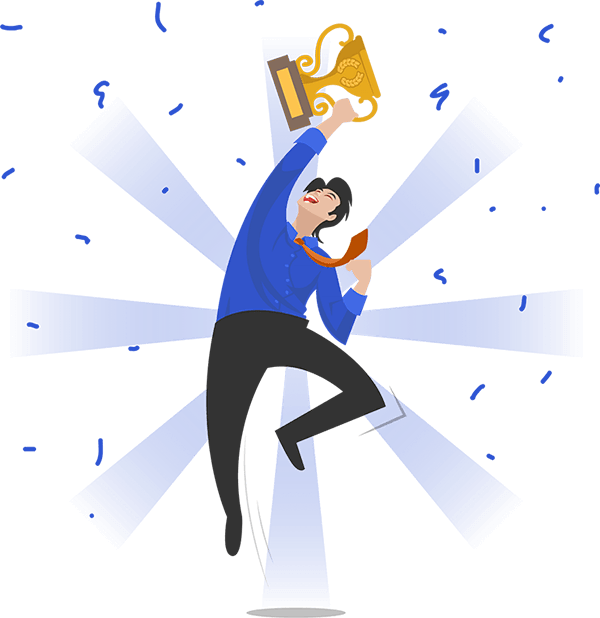Animal intelligence and the ability of animals to solve problems has been a topic of much interest in the field of research for a long time. When considering intelligence, it is often claimed that humans are the most intelligent species. However, various animal studies have revealed that skills such as abstract reasoning, problem-solving and language, all of which were once believed to be unique to humans, are quite common in a lot of animals (Roth, 2011). Animal intelligence refers to the mental capabilities of animals and includes all the ways in which animals process, retain and decide how to act upon information produced through the senses (Shettleworth, 2001). Animal intelligence also plays a key role in problem solving.
Don't use plagiarized sources. Get Your Custom Essay on
Animal Minds and Problem Solving: Chimpanzees, Crows, and Dogs
Just from $13/Page
Get Help With Your Essay
If you need assistance with writing your essay, our professional essay writing service is here to help!
Essay Writing Service
In the wild, animals are constantly faced with problems that they must overcome in order to not only survive but prosper as well. To solve these problems, animals must use their cognitive skills to analyse the environment and use the information gained from this analysis to benefit themselves. For example, animals may need to develop or use their already existing navigational, tool-making or social skills, as a method of obtaining food (Meehan & Mench, 2007). For many years, it has been believed that animals with larger brains, relative to their body size, are better problem-solvers and are overall more intelligent than animals with smaller brains. This concept was once thought to be extremely controversial as there were very few studies in support of a relationship between the size of an animal’s brain and their problem-solving skills. However, a groundbreaking study conducted in 2016 revealed that a strong relationship does indeed exist between brain size and problem-solving ability.
The researchers examined the ability of 140 animals from 39 different species of Carnivora, to complete a problem-solving task. Each animal was presented with a closed box that contained their preferred food inside. To solve the puzzle, the animals were required to slide a latch which would open the door to the box and allow them to get the food. The results revealed that the animals’ brain size significantly predicted their success in solving the problem, with animals with larger brains displaying the most success. Overall, the study provided strong support for the idea that brain size significantly predicts an animal’s problem-solving ability and made it clear that a wide range of animals are capable of solving problems that require strong cognitive and reasoning skills (Benson-Amram, Dantzer, Stricker, Swanson, & Holekamp, 2016).
Chimpanzees
The intellectual similarity between humans and chimpanzees has been the focus of a countless number of studies and is subject of much interest. The brain of a chimpanzee is around one-third of the size of a human brain. However, even with this smaller size, chimpanzees have various high-level cognitive processes such as language and problem solving in common with humans (Robson & Wood, 2008). On multiple occasions, chimpanzees have demonstrated an impressive range of skills. For example, they are able to make tools, solve problems both individually and in groups, as well as having a good memory (Wilford, 2007). An important part in solving problems is communication, something which chimpanzees seem to understand and use frequently. Chimpanzees have been seen using a human-like network of sounds, body language, facial expressions, and hand signals as methods of communicating with each other (Parr, Waller, & Fugate, 2005).
Aside from Jane Goodall’s famous observations of chimpanzees making and using tools in Tanzania, Wolfgang Köhler’s work with chimpanzees is a significant early example of the strong problem-solving skills demonstrated by chimpanzees. In one experiment, a piece of fruit was hung in the air just beyond reach of the chimpanzees, who were provided with either two small sticks or three boxes. Köhler noted that when the chimpanzees realised that they could not simply reach out or jump up to attain the fruit, they stopped and contemplated a way to solve the problem. Instead of using the trial and error method, Köhler described the chimpanzees as acting with purpose by either stacking boxes on top of each other and climbing them to acquire the fruit or combining the two sticks to make one stick long enough to get the fruit. This is just one example of when chimpanzees have displayed strong cognitive skills and excelled in a problem-solving task (Windholz & Lamal, 1985).
A study was conducted by Premack and Woodruff (1978), which examined the problem-solving skills of an adult chimpanzee. The chimpanzee was shown recorded footage of a human attempting to solve eight different problems. The chimpanzee was then shown two photos; one of these photos detailed an action or an object that could solve the problem, while the other photo was unrelated. For seven of the eight problems, the chimpanzee correctly identified the photo that would solve the problem. The results of the study demonstrated strong problem-solving skills, as the chimpanzee was able to analyse the nature of problem and identify the solution. Overall, it is clear that chimpanzees excel in problem solving and are able to find a solution to a range of different problems.
Crows
For many years, scientists and researchers alike have been fascinated by the human-like intelligence and impressive problem-solving skills demonstrated by crows. On various occasions, they have been seen making and using tools, as well as displaying an understanding of cause and effect. Crows have also shown that they are capable of recognising and committing faces to memory. The reason for their superior intelligence is believed to be due to the fact they have relatively big brains compared to their body size. As revealed in the aforementioned study on animal problem-solving, animals with bigger brains relative to their body sizes are generally more intelligent and better at problem-solving than animals with smaller brains, which would explain why crows seem to excel at problem-solving and demonstrate a significant intellectual capacity.
A study conducted by Veit and Neider (2013), provided insight into the parts of the crow brain related to problem solving. The study involved a group of crows engaging in a problem-solving test, while the researchers payed close attention to the brain activity in the crows. It was identified that there was a significant amount of activity occurring in the nidopallium caudolaterale (NCL), which is somewhat equivalent to the prefrontal cortex in the human brain. Similar to the prefrontal cortex, which is described as being the centre of intelligence in the human brain, the NCL is the region of the bird brain which involves high-level thinking, problem solving and decision making
Dr Alex Taylor, who specialises in the cognition of crows, conducted an experiment which made it clear that crows are in fact strong problem solvers. The experiment consisted of a puzzle with eight different levels. Each level had a problem, that when solved, would provide the crow with a tool capable of solving the next level’s problem. Completing each level of the puzzle by using the tools the correct way demonstrates a significant level of intelligence. Notably, the crows solved the complex puzzle quite easily, which indicates not only a strong problem-solving ability but also a high intellectual capability (Pachniewska, 2016).
An additional study was conducted by biologist Sarah Jelbert, which was designed to assess the problem-solving skills of crows. For the experiment, the crows were presented with a slightly filled tube of water, that also contained a small piece of meat that was too far down for the crows to reach. The crows were provided with solid objects that would sink and raise the water level significantly, as well as hollow objects that would only float. In order to get the meat, the crows were required to drop the solid objects into the tube, which would then raise the meat high enough for the crows to reach. The results identified that 90% of the attempts involved the crows using a solid object rather than a hollow object. The researchers for the study compared this level of intelligence, problem-solving ability and comprehension of physics to that of a 7-year-old child (Begley, 2014). Overall, it is clear from the results of this study and the previous study that crows have significantly strong problem-solving skills and can be considered as very intelligent.
Dogs
For years, the concept of canine intelligence has fascinated many. On multiple occasions, dogs have demonstrated their ability to recognise and respond to a range of signals and commands. According to Stanley Coren, a psychologist at the University of British Colombia, the average dog is capable of learning around 160 words, while dogs in the top percentile of canine intelligence, can learn approximately 250 words. Coren also described the mental capabilities of dogs as similar that of a two-year-old child (Viegas, 2014).
Humans have been known to rely on dogs for a range of things such as companionship, guidance and military services, as well as search and rescue. Perhaps their most impressive feat is the fact that dogs can also use scent to detect many different types of cancer, including skin, lung, and breast cancer. They have even been able to identify the cancer when medical methods have initially failed to do so. All of these tasks rely on dogs having a range of problem-solving skills that must work in unison to produce the optimal outcome. For example, the dog must keep their attention focused solely on the task, distinguish between stimuli, ignore distractions in the environment and then select the correct course of behavioural action to take (Bray, MacLean, & Hare, 2013).
In the average dog, the brain weighs around half of one percent of its body weight and is one-tenth of the size of a human brain. However, various MRI studies have revealed that the human and canine brain are structurally similar and that the same regions of these two brains light up when reacting to events and stimuli. The way the canine brain reacts to fear or manages memories is also similar to that of the human brain (Travis, 2014). While the limbic system is region of the dog’s brain involved with emotion, the prefrontal cortex is the region involved with thought. It is essentially the centre of memory, attention, and problem-solving (Walden, 2013). When presented with a problem, it is the prefrontal cortex that displays the most activity and is the region of the dog brain that functions as a problem-solving aid and attempts to identify a solution.
However, people are still very divided when it comes to the problem-solving skills of dogs. Many researchers believe that the domestication of dogs has made their ability to solve problems heavily reliant on the relationship they have with their owners, rather than their own cognitive abilities. For this reason, a lot more research must be conducted to gain a true understanding on the problem-solving skills of dogs. That being said, a recent study by Brubaker and Udell (2018) revealed that giving a dog verbal or physical encouragement can significantly increase their ability to solve problems. The study consisted of a large number of dogs, with the task being to get a piece of meat out of a box in under two minutes. A portion of the dogs were tested in a condition where they received no encouragement from their owners, with only a few managing to successfully complete the task. However, in the condition where the owners either verbally or physically encouraged the dogs, a lot more of them were able to get the meat and successfully solve the puzzle.
A study conducted by Topál, Miklósi, and Csányi (1997), also came to the conclusion that problem solving in dogs is strongly influenced by the relationship with the owner. The experiment involved 28 dog-owner pairs being examined while completing a basic problem-solving task. The results revealed that the dogs in a strong companionate relationship with their owners displayed socially dependent characteristics and performed weakly on the problem-solving task. The researchers believed that the dogs’ poor performance on the problem-solving task was not necessarily related to their cognitive capabilities but rather, it was the strong relationship with the owner that prevented them from successfully solving the problem. Overall, it is clear that while dogs can be extremely intelligent, there is not enough supporting research to conclude that they are strong individual problem-solvers.
Conclusion
In conclusion, it is clear that a diverse range of animals are capable of solving complex problems that require strong cognitive and abstract reasoning skills. Humans may be considered the most intelligent species, but it has become apparent that the chimpanzee, crow, and dog are certainly not far behind.
References
Begley, S. (2014). Crows solve Aesop’s fable puzzles, offer clues to cognition. Retrieved from https://www.reuters.com/
Benson-Amram, S., Dantzer, B., Stricker, G., Swanson, E. M., & Holekamp, K. E. (2016). Brain size predicts problem-solving ability in mammalian carnivores. Proceedings of the National Academy of Sciences, 113, 2532-2537. doi: 10.1073/pnas.1505913113
Bray, E. E., MacLean, E. L., & Hare, B. A. (2013). Context specificity of inhibitory control in dogs. Animal Cognition, 17, 15-31. doi: 10.1007/s10071-013-0633-z
Brubaker, L., & Udell, M. A. (2018). The effects of past training, experience, and human behaviour on a dog’s persistence at an independent task. Applied Animal Behaviour Science, 204, 101-107. doi: 10.1016/j.applanim.2018.04.003
Meehan, C. L., & Mench, J. A. (2007). The challenge of challenge: Can problem solving opportunities enhance animal welfare? Applied Animal Behaviour Science, 102, 246-261. doi: 10.1016/j.applanim.2006.05.031
Pachniewska, A. (2016). Crows crack 8-level conundrums. Retrieved from http://www.animalcognition.org/
Parr, L. A., Waller, B. M., & Fugate, J. (2005). Emotional communication in primates: implications for neurobiology. Current Opinion in Neurobiology, 16, 126. doi: 10.1016/j.conb.2006.01.006
Premack, D., & Woodruff, G. (1978). Chimpanzee problem-solving: a test for comprehension. Science, 202, 532-535. doi: 10.1126/science.705342
Robson, S. L., & Wood, B. (2008). Hominin life history: reconstruction and evolution. Journal of Anatomy, 212, 394-425. doi: 10.1111/j.1469-7580.2008.00867.x
Roth, J. (2011). Animal intelligence resists definition. Retrieved from http://www.animalintelligence.org/
Shettleworth, S. J. (2001). Animal cognition and animal behaviour. Animal Behaviour, 61, 277-286. doi: 10.1006/anbe.2000.1606
Topál, J., Miklósi, Á., & Csányi, V. (1997). Dog-human relationship affects problem solving behaviour in the dog. Anthrozoös, 10, 214-224. doi: 10.2752/089279397787000987
Travis, H. (2014). Dog brain facts: Do dogs think and have feelings? Retrieved from https://www.petmd.com/
Veit, L., & Nieder, A. (2013). Abstract rule neurons in the endbrain support intelligent behaviour in corvid songbirds. Nature Communications, 4, 251-283. doi: 10.1038/ncomms3878
Viegas, J. (2014). 10 surprising facts about animal intelligence. Retrieved from https://www.seeker.com/
Walden, K. (2013). What part of the dog brain affects behavior? Retrieved from https://dogcare.dailypuppy.com/
Wilford, J. (2007). Chimpanzees: Almost human, and sometimes smarter. Retrieved from https://www.nytimes.com/
Windholz, G., & Lamal, P. A. (1985). Köhler’s insight revisited. Teaching of Psychology, 12, 165-167. doi: 10.1207/s15328023top1203_14







